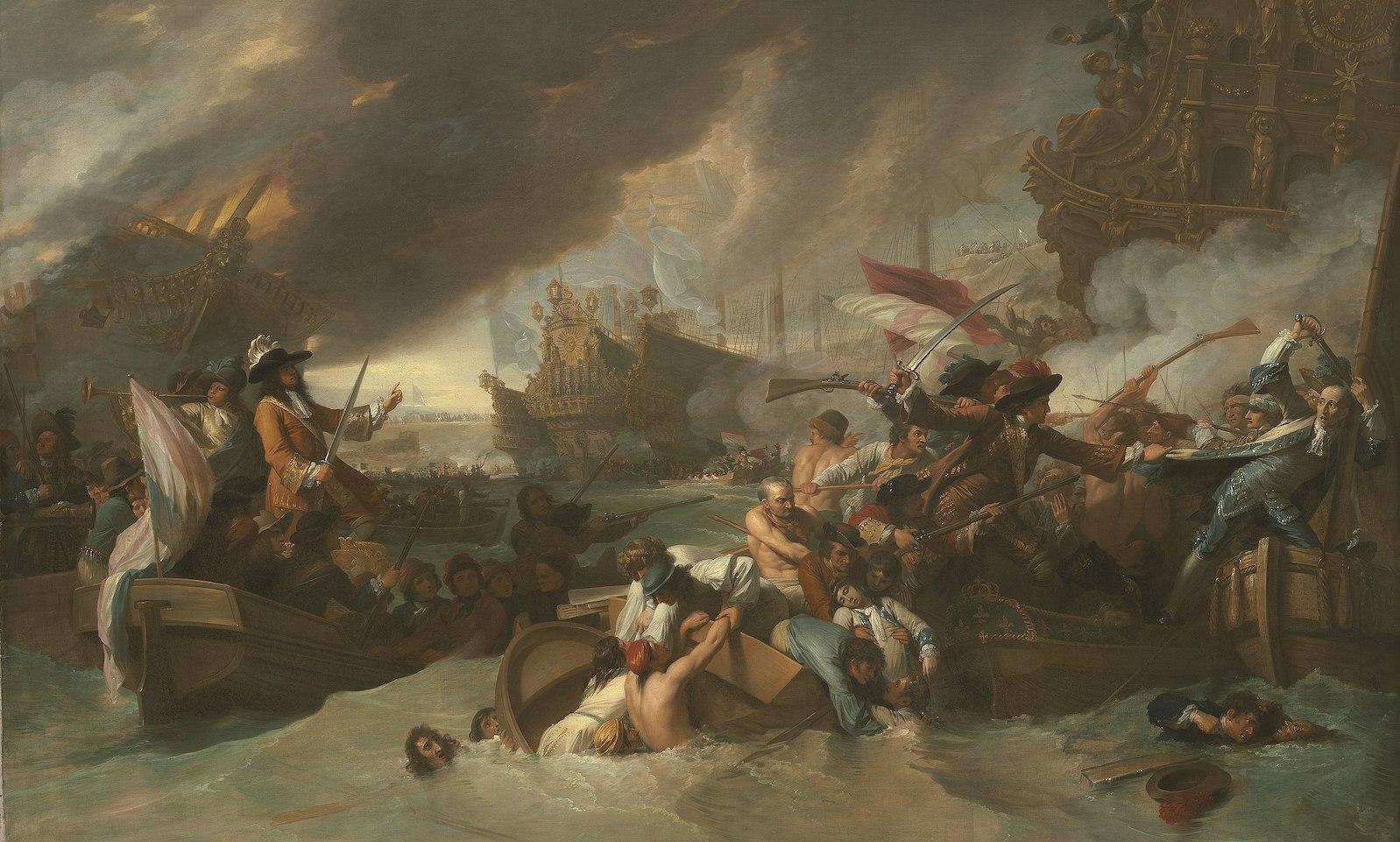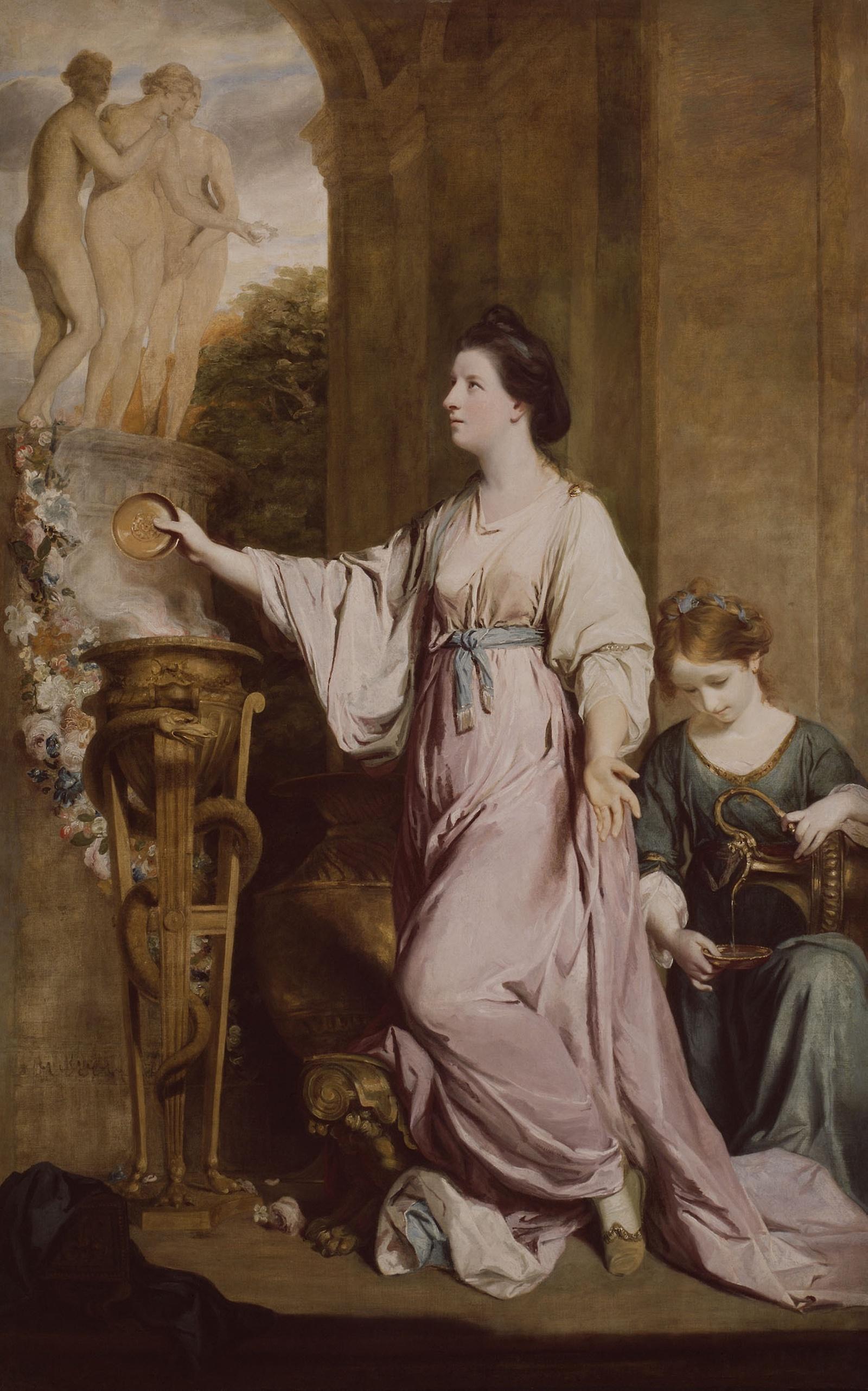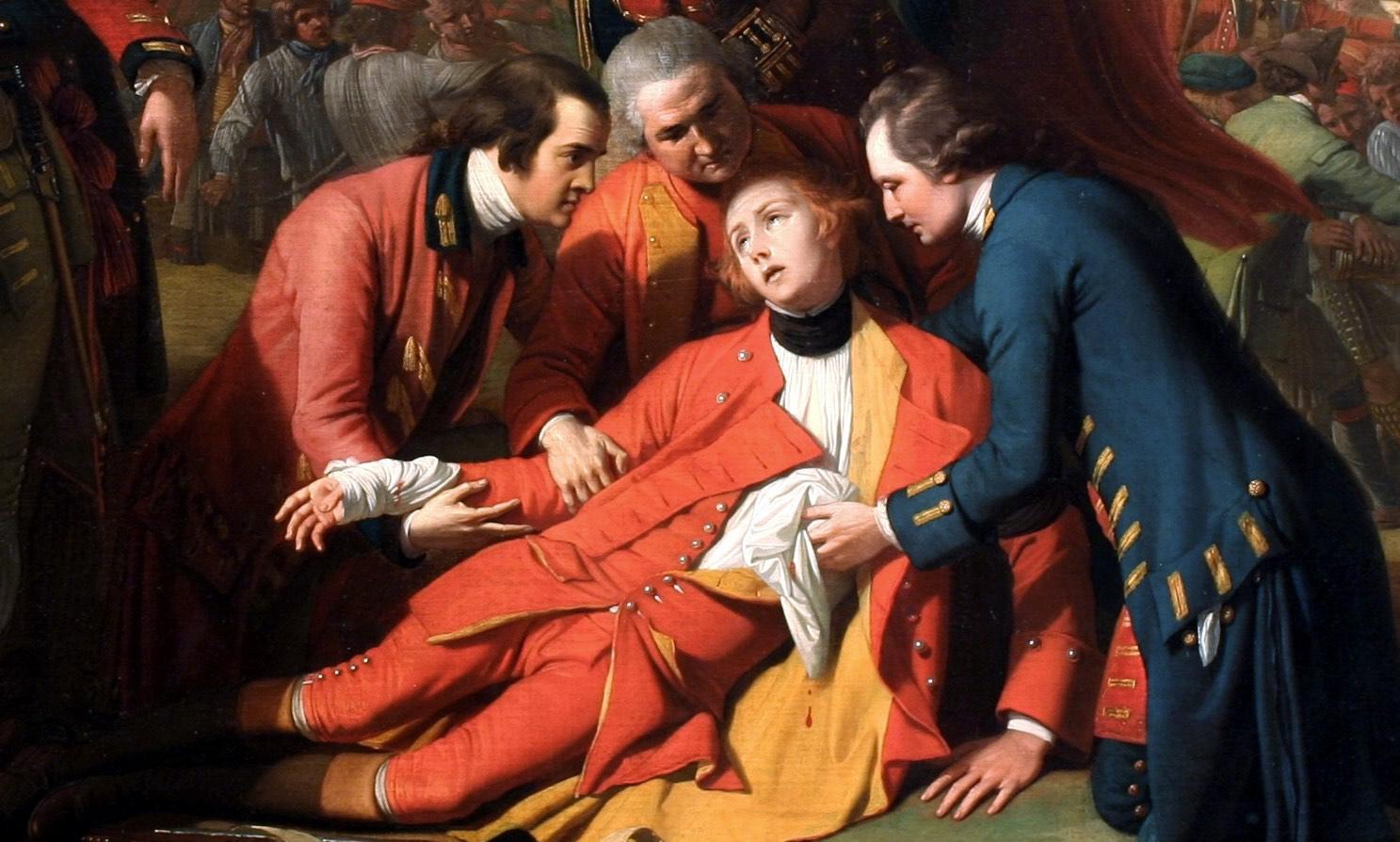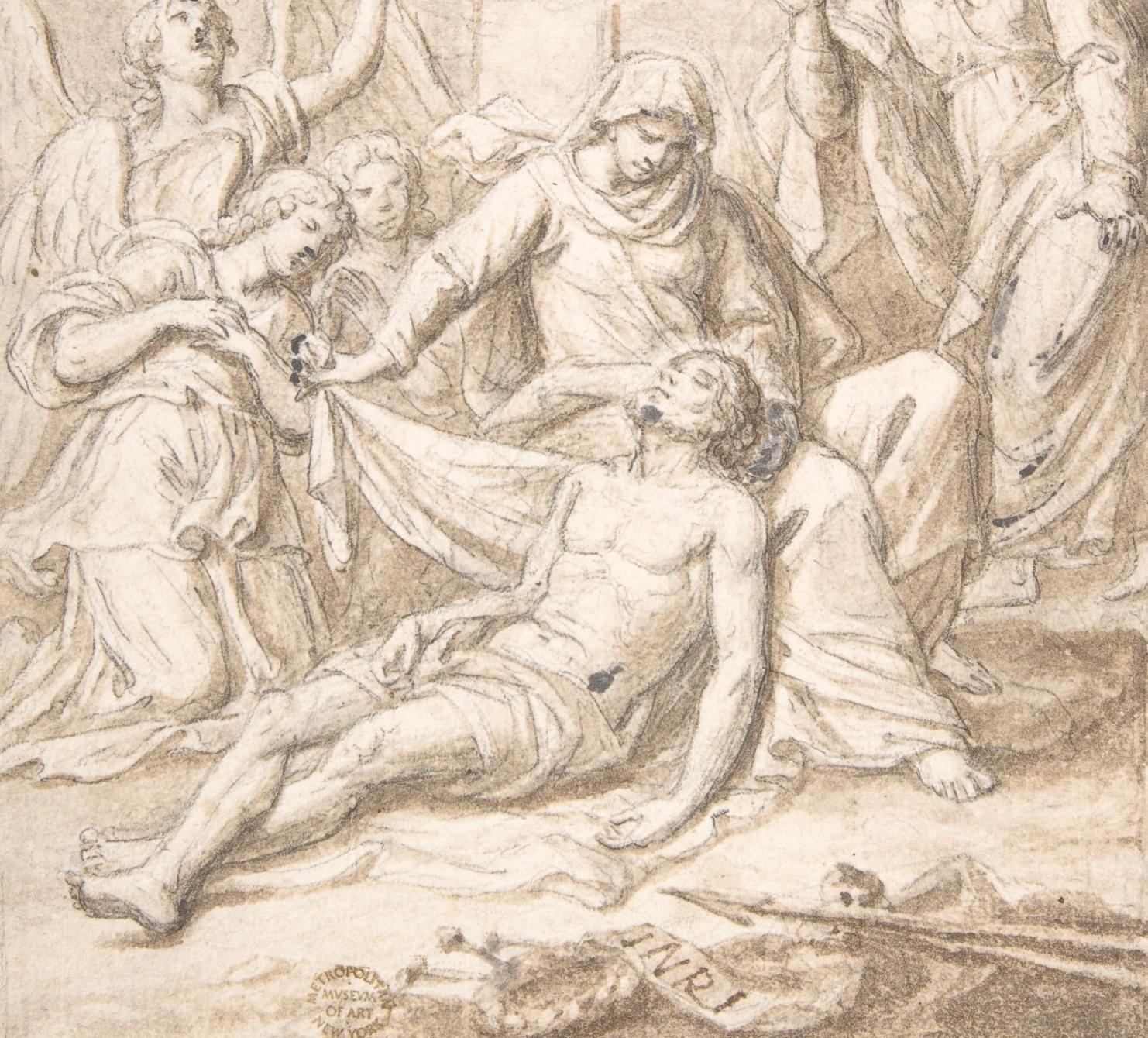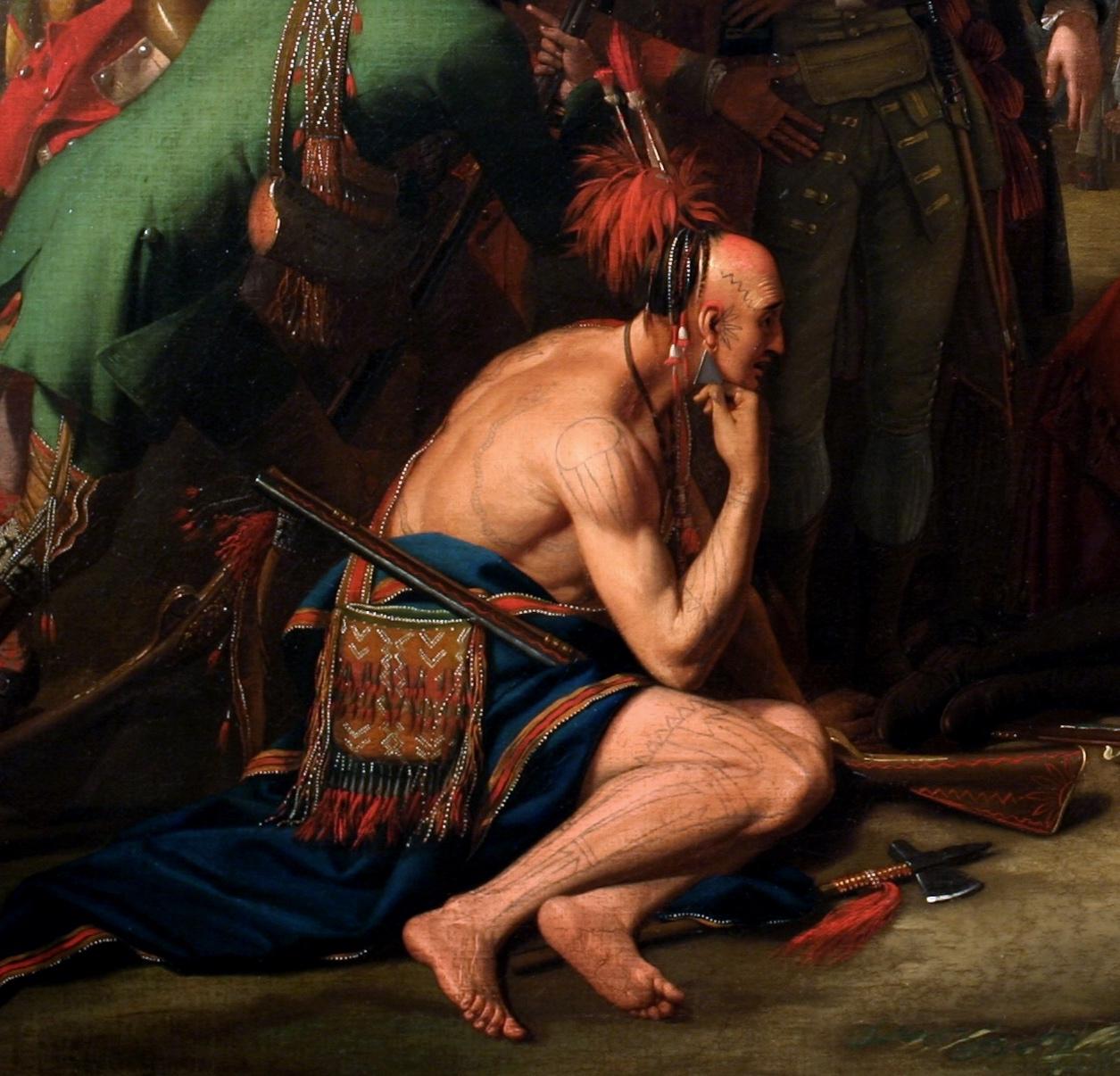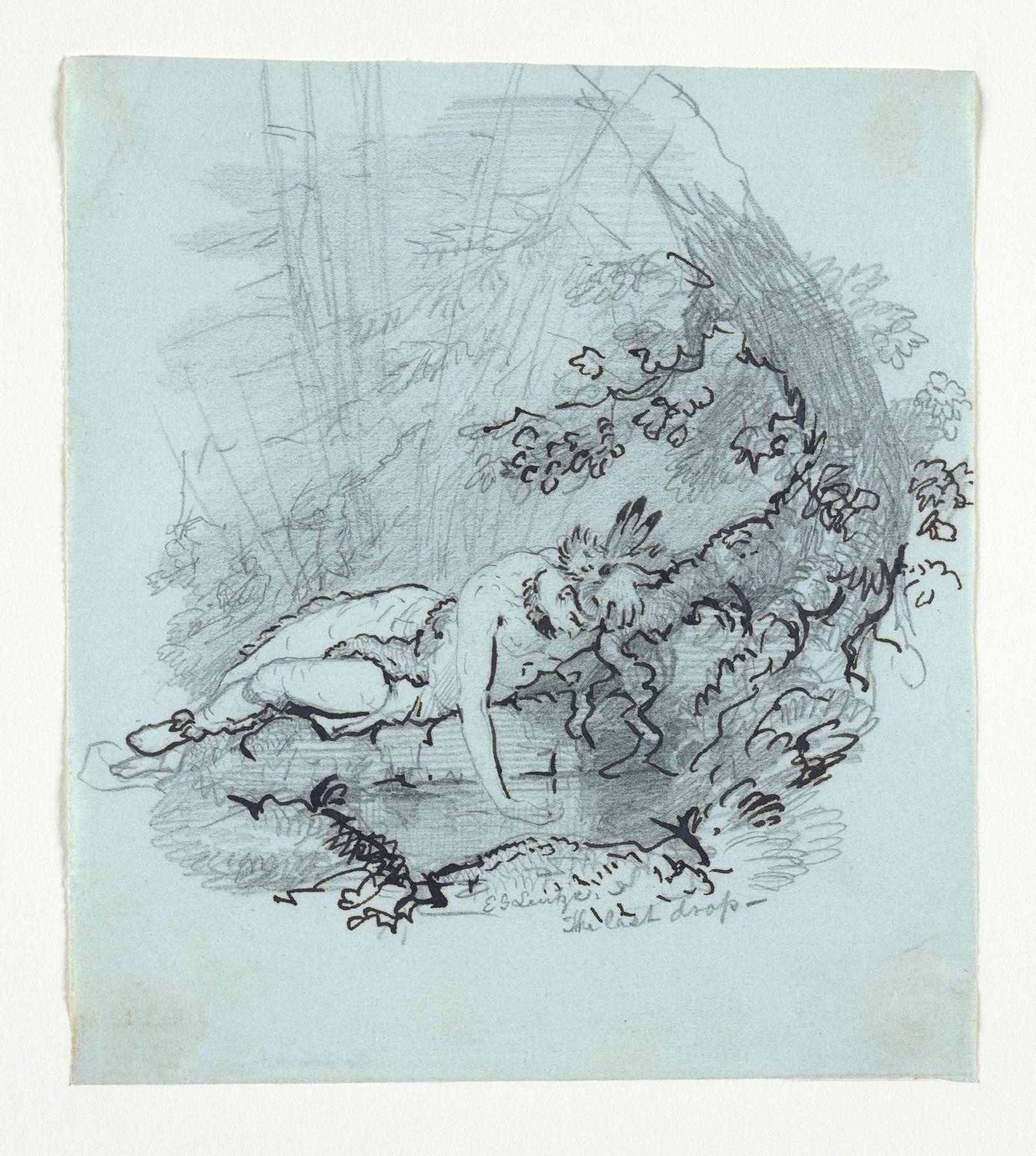Still, some—though not all—history paintings played an undeniable role in sustaining the dynasties and empires that cropped up during these centuries. And, perhaps even more so, these paintings worked to quash any sense of autonomy within the colonies and territories obtained by these national powers, all in order to solidify control.
In an important diversion from stylistic tradition set by artists like Reynolds, Benjamin West aimed to make his history paintings as accurate as possible in terms of clothing and setting—from accurate architecture to regional flora and fauna. Especially when applied to the painting of contemporary events, this gave West’s work an extra sense of realism and reliability. Even Reynolds admitted as much.




